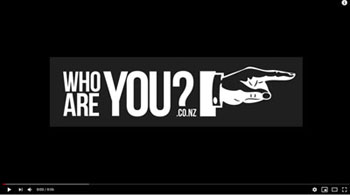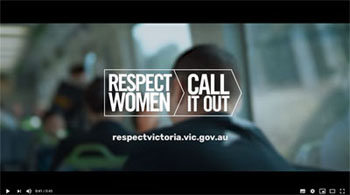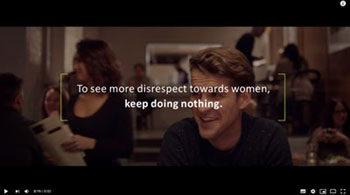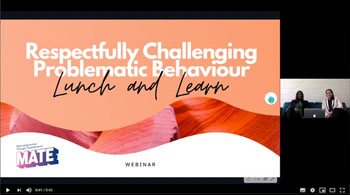How to be an active bystander
Credit: Contents of this webpage are drawn from the online bystander intervention resource Rise Above the Pack

Bystander intervention
If there’s a group of people telling racist jokes: will you speak up and say you don’t want to hear it? If someone sends you emails or texts with content that demeans women: will you ask them to stop? If someone is affected by alcohol and can’t make their way home safely: will you make sure they get home safely? If you see a serious situation that looks like police assistance is required: will you call the police?
Bystander intervention is an approach that can be used to improve situations where it looks like a person could use some help. The approach is about being an active, positive contributor – someone who challenges problematic behaviour effectively and respectfully.
In a situation where something bad is happening bystanders are witnesses who think ‘somebody should do something about this’.
- passive bystanders are people who might think ‘somebody should do something about this’ but then choose, for whatever reason, not to act
- active bystanders are people who think, ‘I should do something about this’ and then do something to try to improve the situation
Barriers to being an active bystander
Being an active bystander isn’t always easy. It takes courage to try to improve a situation. There can be many reasons why someone might hesitate to act – for example, to avoid confrontation, fear for one’s physical safety, concerns about being judged, or worries about getting it wrong and making matters worse. Sometimes choosing not to act is based on a belief that it is pointless to do so – a sense that this is ‘just the way it is and nothing I do is going to change it.’ Sometimes bystanders may not act because they believe someone else will say or do something instead, or perhaps it is simply not knowing what to do or say to try to improve the situation.
However, bystander intervention can make a big difference.
“Staying true to yourself and what you believe in, makes a difference …. It’s about internal validation versus external validation, setting an example, and consciously making the decision to be a good human, despite the barriers.”
Respectfully Challenging Problematic Behaviour, MATE Bystander webinar (July 2020)

Ways to be an active bystander
Being an active bystander doesn’t always mean confronting a perpetrator face to face. If there are safe and calm ways that you can address a perpetrator, you may choose to step in, but it’s important to remember bystander intervention is about improving the situation – and this can include direct and indirect intervention.
Three important rules for being an active bystander
Regardless of which way you choose to be an active bystander there are three important rules.
- Safe: Keep yourself and others safe. Assess the risk of direct intervention. If you are concerned for the safety of yourself or others, you can choose a more indirect form of being an active bystander. If you get involved in a situation that starts to feel unsafe, try and get out of it and then reassess your options. Don’t be aggressive or violent. The purpose is to challenge unacceptable behaviour with acceptable behaviour.
- Active: Do something. Focus on what you can do. Don’t talk yourself out of action by saying things like ‘what’s the point, it won’t change anything’ or ‘someone else will do something about it’. Believe that you can influence others. Think about the most appropriate action to take.
- Calm: Always stay calm and try to calm others. The less agitated people are the less likely things are to get out of control.
Some examples of direct bystander intervention
- Interrupt the behaviour – for example:
- ask a man who is harassing a woman on the street for directions or the time
- a man was waiting near a city bus stop at night. He noticed that a car kept driving past and slowing down, and some men inside the car were harassing a woman who was waiting at the bus stop. The man walked over to the woman and said ‘Hello Mary.’ The car drove away. Her name was not Mary and he did not know her but he chose to intervene in the situation. He did not need to confront the perpetrator.
- Use body language to communicate that the behaviour is unacceptable – sometimes a disapproving look can be simpler and more effective than words
- Bring it home – for example, ask ‘what if someone said that to your girlfriend?’
- Publicly support the victimised person – ask ‘are you ok?’
- Start a line of enquiry. Sometimes when you hear or see something that doesn’t seem right, the opportunity presents itself to help the person who is being offensive to better understand the impact of their behaviour. Here are some things you could say (as recommended by MATE Bystander – see webinar link below).
If they say … “It was just a joke” “It’s just the way it is” “I’m just saying…” “It will never change” | You could try saying … “I don’t understand the joke, can you explain it to me?” “Do you really think that’s the case?” “I don’t know the answer, but I don’t think that’s it” “What do you mean by that?” “Is it though…?” “I’d like to think we can change it – don’t you?” |
Some examples of indirect bystander intervention
- Get help from someone better placed to intervene – this could include the police, security, staff, or friends of the people involved. Example: you see someone acting inappropriately at a venue, and alert security who ask the person to leave
- Privately support an aggrieved person – listen supportively and provide information about resources and support services
- Report the incident – if the perpetrator is from an identifiable group (e.g. function, workplace, etc.) you could make a complaint about their behaviour
Like to find our more?
Respect Officer support for bystanders
If you witness something that doesn’t seem right, and it relates to a member of the Notre Dame community, we would love to hear from you. Please feel free to have a confidential discussion with a University Respect Officer who will listen to your information and consider appropriate next steps.
If you would like support for an incident you have witnessed or been involved in, or a situation in which you have intervened, you are also welcome to contact a Respect Officer or the University Counselling Service which is free for students.




Connect with Notre Dame on Social Media
Australia
Fremantle
Broome
Sydney